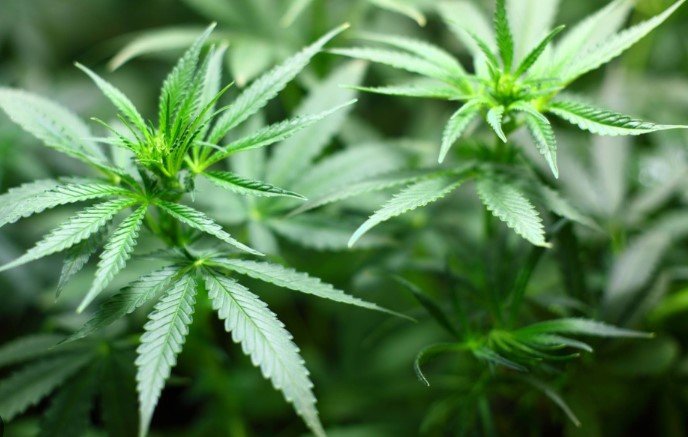The Therapeutic Goods Administration (TGA) has released the latest data on the Special Access Scheme Category B (SAS-B) applications for medicinal cannabis products in Australia. The data shows that the year 2024 has started strongly for medicinal cannabis approvals, with 10,596 applications approved in January, compared to 9,375 in December 2023.

QLD dominates the SAS-B approvals
According to the TGA data, Queensland has been the most active state in accessing medicinal cannabis products through the SAS-B pathway, generating 4,067 applications in January, which accounted for 38% of the total approvals. Queensland has maintained its lead since November 2023, when it surpassed Victoria as the top state for medicinal cannabis approvals.
Victoria was the second most active state in January, with 3,823 applications approved, followed by New South Wales with 1,635 applications. The other states and territories had much lower numbers of approvals, ranging from 14 in the Northern Territory to 430 in Western Australia.
High-THC products are the most popular category
The TGA data also reveals that high-THC, category 5 products were the most popular category of medicinal cannabis products among the SAS-B applicants, contributing almost half (49%) of the approvals in January. High-THC products are typically used for treating chronic pain, anxiety, sleep disorders, and other conditions.
The second most popular category was balanced, category 4 products, which contain both THC and CBD and account for 28% of the approvals. Balanced products are often used for treating epilepsy, multiple sclerosis, and other neurological disorders.
The remaining categories were low-THC, category 3 products (12%), CBD-only, category 2 products (9%), and pre-category approval products (2%). Pre-category approval products are those that were approved before November 2021, when the TGA introduced the category-based system for medicinal cannabis products.
Men and young adults are the main users of medicinal cannabis
The TGA data also provides some demographic insights into the SAS-B applicants. The data shows that men were the main users of medicinal cannabis products, representing 68% of the approvals in January. This is consistent with previous months, where men have always outnumbered women in accessing medicinal cannabis products through the SAS-B pathway.
The data also shows that young adults were the main age group of medicinal cannabis users, with 43% of the approvals in January coming from the 18-44 age bracket. The second most common age group was 45–64, with 36% of the approvals, followed by 65 and over, with 19% of the approvals. The least common age group was under 18, with only 2% of the approvals.
Chronic pain, anxiety, and sleep disorders are the main conditions treated with medicinal cannabis
The TGA data also reveals the main conditions that were treated with medicinal cannabis products by the SAS-B applicants. The data shows that chronic pain was the most common condition, accounting for 44% of the approvals in January. Chronic pain is a broad term that covers various types of pain, such as neuropathic pain, cancer pain, arthritis pain, and fibromyalgia pain.
The second most common condition was anxiety, which accounted for 32% of the approvals. Anxiety is a mental health disorder that causes excessive worry, nervousness, and fear and can affect various aspects of life, such as work, social, and personal.
The third most common condition was sleep disorder, which accounted for 9% of the approvals. Sleep disorder is a term that covers various problems with sleeping, such as insomnia, sleep apnea, restless legs syndrome, and narcolepsy.
Other conditions that were treated with medicinal cannabis products by the SAS-B applicants included PTSD (2%), depression (2%), epilepsy (1%), multiple sclerosis (1%), and others (9%).
Oral solutions and flowers are the main formats of medicinal cannabis products
The TGA data also shows the main formats of medicinal cannabis products that were approved by the SAS-B pathway. The data shows that oral solutions were the most popular format, accounting for 49% of the approvals in January. Oral solutions are liquids that contain medicinal cannabis extracts and are usually taken by mouth or under the tongue.
The second most popular format was flower, which accounted for 36% of the approvals. The flower is the dried and cured part of the cannabis plant that contains the cannabinoids and is usually smoked or vaporized.
The other formats of medicinal cannabis products that were approved by the SAS-B pathway included inhalation (8%), capsules (2%), topical (1%), spray (1%), suppository (1%), and others (2%).
The number of prescribers is increasing
The TGA data also indicates the number of medical practitioners who have prescribed medicinal cannabis products through the SAS-B pathway. The data shows that 876 prescribers generated 10,596 applications in January, which is an increase from 853 prescribers in December 2023.
The TGA data also shows the distribution of prescribers by state and territory. The data shows that Victoria had the most prescribers, with 258, followed by Queensland with 231, and New South Wales with 178. The other states and territories had much lower numbers of prescribers, ranging from 4 in the Northern Territory to 69 in Western Australia.
The TGA data provides a comprehensive overview of medicinal cannabis access and usage in Australia through the SAS-B pathway. The data shows that the demand for medicinal cannabis products is growing in Australia and that Queensland and high-THC products are leading the way in 2024.
